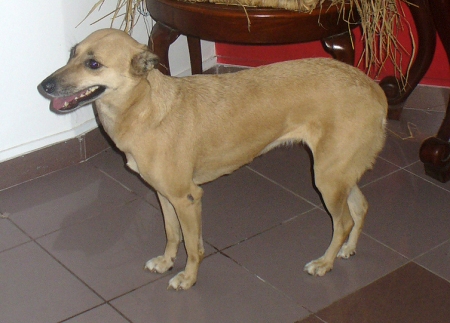 Imagine a series of bombs exploding before you? Wouldn’t you be terrified? Luckily, we do not have to live in fear for bombs, but firecrackers which are lit in these festive times create a similar horrific atmosphere for our pet dogs who have very sensitive ears. To make the matter worse, firecrackers are also being lit for the elections and what with the frequent April storms with loud claps of thunder, animals can be easily traumatised.
Imagine a series of bombs exploding before you? Wouldn’t you be terrified? Luckily, we do not have to live in fear for bombs, but firecrackers which are lit in these festive times create a similar horrific atmosphere for our pet dogs who have very sensitive ears. To make the matter worse, firecrackers are also being lit for the elections and what with the frequent April storms with loud claps of thunder, animals can be easily traumatised.
“We’ve already got few dogs that developed a fear psychosis for firecrackers, whose behavioral patterns have changed. They’re not taking their food properly and are always trying to hide, giving the impression to the owner that they are sick,” the Head of the Veterinary Clinical Sciences Department of the Peradeniya Vet Faculty, Prof. Indira Silva told the Sunday Times. “The level of fear of loud noises varies from animal to animal, but those who have a fear psychosis need to be looked after carefully during this festival season,” the Prof. warns.
The frequencies that dogs can perceive and hear are almost twice that of humans and they can pick up and distinguish sounds at roughly four times the range of humans. For example a sound that you can hear at 20 metres, a dog can detect, pinpoint and interpret at 80 metres. So a loud noise for us would be almost unbearable for a dog. Prof. Indira also points out that the dogs are sensitive as well to the vibrations loud noises cause, so they may get startled as well as scared.
Your pet might even try to escape and find a place where it can hide from the loud noise. We often hear of dogs getting lost during this season or cats going missing for few days.
For some precautionary steps to help our canine companions see www.ddfl.org.
What to do
* Create a safe place: Try to create a safe place for your dog to go to when it hears the noises that frighten it. But remember, this must be a safe location from its perspective, not yours.
* Distract your dog: Encourage it to engage in any activity that captures its attention. Try to interest the animal in doing something that it really enjoys. But if you cannot keep its attention and it begins acting afraid, stop. If you continue, you may inadvertently reinforce its fearful behaviour.
* Behaviour modification: Begin by exposing your pet to a level of noise (perhaps a recording of a loud explosion) that does not frighten it and pair this with something pleasant, like a treat or a fun game. Gradually increase the volume as you continue to offer your dog something pleasant.
* Consult your veterinarian: Medication may be available which can make your dog less anxious for short time periods in extreme cases.
What not to do
* Attempting to reassure your dog when it is afraid may reinforce its fearful behaviour. If you pet, soothe or give it treats when it is behaving fearfully, the dog may interpret this as a reward for such behaviour. Instead, try to behave normally, as if you do not notice its fearfulness.
* Do not punish your dog for being afraid. Punishment will only make it more afraid.
* Locking your dog in a kennel to prevent it from being destructive is not recommended. It will still be afraid and is likely to injure itself, perhaps even severely, while attempting to get out.
* Do not try to force your dog to experience or be close to the sound that frightens it.
Published on TimesOnline – web version of ST on 12.04. 2010
Leave a comment